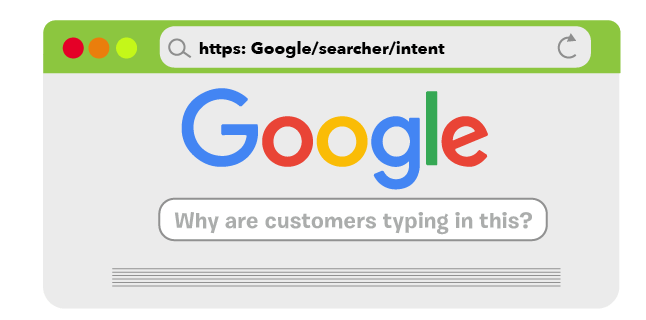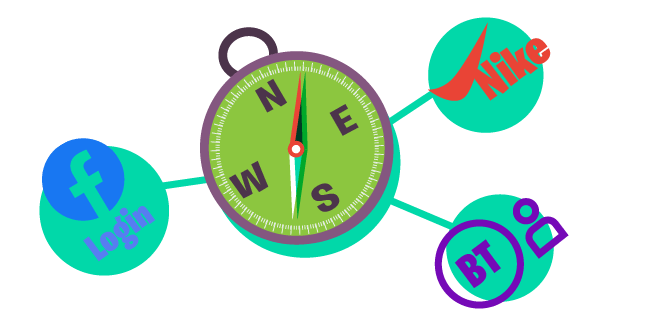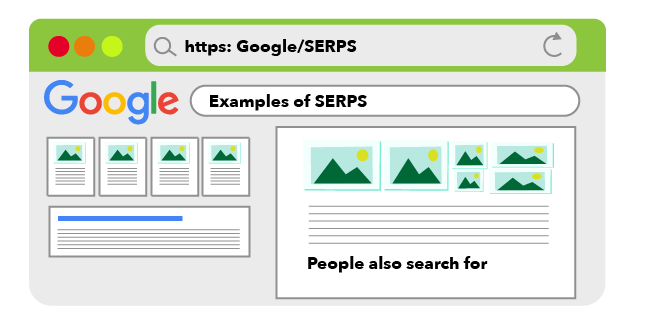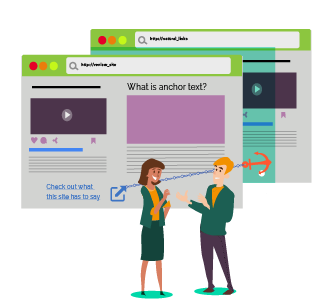Have you ever thought about the way we search for things online?
And how search engines seem to know exactly what we’re looking for.
For example, say we are looking for a new car and we type ‘Mini’ into a web browser.
What results appear?
Not the dictionary, right? Or the iPad mini. But the car manufacturer.
How did Google know that we were looking for cars and not something else?
Understand searcher intent and how it can help you improve your content
Search engines have spent years trying to develop their algorithms to understand what searchers are really looking for when typing a query. Using complex artificial intelligence, they have the ability to connect people to the pages that they think are most relevant.

Previously, the key to connecting with wider audiences was ranking highly by including an abundance of keywords in your content.
Today, in order to rank highly and connect with your intended audience you still need to include targeted keywords and close matches. However, your relevance to a searcher’s query and how much value you could provide is far more important.
And that’s why search intent is such an important consideration during your content planning.
What is searcher intent?
Searcher intent is the purpose behind every search query that’s conducted online. The why behind what’s being typed into the search bar.

Why did the individual make this search? Are they looking to make a purchase? Do they want to learn something new? Or are they looking for a particular brand?
Everyone who conducts an online search query has a purpose.
Take a look at your own search queries – perhaps the past five. What was your intention behind each of them? To learn? Purchase? Or did you have an ulterior motive?
Why does searcher intent matter?
Google’s own mission statement says that their purpose behind search is to ‘organise the world’s information and make it universally accessible and useful.’
Therefore, it’s essential that the content you create fulfills the search intent of your target audience. Otherwise your content will go unnoticed.
Relevance is key
The foundation of all SEO success isn’t just about keyword instances anymore. It’s about being the most relevant result for a search query. And peppering it with relevant keywords.
And that means creating content with a purpose to fulfil searchers’ intent.

4 types of search intent
When it comes to the intention of the searcher, there are four types of search terms which you need to be aware of.
Navigational

The searcher already knows the website(s) they want to visit. Navigational search terms will usually include a website’s name alongside any keywords in the search term.
Examples include:
- “Facebook login”
- “Nike”
- “BT customer services”
Informative

The searcher is attempting to find information about a particular topic . These search terms are typically broader. They also provide a great opportunity to increase your conversion rates.
Examples include:
- “Who is Donald Trump?”
- “Football scores”
- “Easy chocolate cupcake recipe”
Transactional

The searcher is carrying out their search with the intent to complete an action such as subscribe to a newsletter or make a purchase.
Transactional search terms are the most valuable traffic segments you can target. This is because the end-user already knows what they want and are ready to act.
Examples include:
- “Buy iPhone 11”
- “New York Times newsletter signup”
- “Cheap Nespresso coffee machine”
Commercial investigation

The searcher is carrying out their search with the intention to buy in the future, They use the web to conduct research.
These are similar to transactional intent but these searchers need some more persuasion before entering into the sales process.
Examples include:
- “Samsung QLED TV review”
- “Price comparison flights to Australia”
- “Best Xbox bundle deals right now”
Carrying out keyword research helps you to understand what type of searches your target market are carrying out.
Determining whether these are navigational, informative, transactional or commercial investigations puts you in a position to act accordingly.
How to interpret search intent
Often, the search intent is obvious from the search query itself.
For example, take the search query “buy PS4.” It’s clear that this is a transactional query and the searcher wants to purchase a gaming console.
Alternatively, the search query; “how to lace trainers” is an informational search. It’s obvious that the searcher is looking to learn or find out new information.
Keyword modifiers are essential to understanding intent
Interpreting the language of a search query is the key to unlocking insights into what your target audience wants.
Modifiers are great hints into understanding a searcher’s intent and discovering what content you can provide for them.
But not all search queries include modifiers
Not all the search queries you come across online will be long tail or include modifiers such as product names, questions and words like ‘buy’. That means you can’t rely on the modifier words to understand what a searcher’s intent is.
This is where SERPs come in.

Using SERPs to infer searcher intent
If you’re trying to infer a short tail search query without modifiers, then search engines like Google offer some great insights into what a user may be looking for.
These are called SERP features, and include:
- Shopping results
- Featured snippets
- Knowledge cards
- People Also Asked (PAA) Questions
- AdWords ads
- Video results
Let’s take a look at an example of how a SERP feature can help infer searcher intent.
So, if we enter the short tail keyword ‘iPhone 11’ into Google, we may see at the top of the SERP, a carousel of Google Ads. The search engine may think we want to purchase an iPhone 11 and carry out a transactional query.
This is because most people searching for iPhone 11s are probably looking to purchase a new smartphone.
However, if we scroll down the SERPs page further, we may see that there’s some PAA questions. These might be; “what’s the difference between the iPhone 11 and iPhone 11 pro?” or “is the iPhone 11 camera good?”
If we were to click on one of these questions, this would indicate to Google that we are conducting an informational query, trying to find out more information about the smartphone.
Alternatively, if we clicked on the related fields feature which includes queries like; “iPhone 11 deal” or “iPhone 11 price comparison”, it would indicate that we are conducting a commercial investigation.
Google then knows we are looking to find those final few bites of information or the best site to complete a purchase.

It can be about how easy to use your website is. How quickly does your customer find what they were looking for? What do they think about your product or service you offer?
Feedback allows you to evaluate your success or failure and take the relevant steps to improve.
The importance of People Also Asked (PAA) questions
When it comes to content marketing, PAA questions and related fields can be a great indication of what types of content you can create to fulfil your target consumer’s search queries.
Clearly the individuals clicking on these SERP features already have an interest in iPhone 11s. This means that if you are an online tech store that offers valuable information about iPhones 11s, potential customers may return to your site to complete their transaction.
Short tail SERPS often have mixed search intent
As we’ve seen from the iPhone 11 example, the SERP has offered us a few searcher intents behind the short tail search query.
Therefore, when creating content for short tail keywords, you need to bear in mind that it may not be applicable to all searcher’s queries.
Instead, looking at SERP features for long tail search terms may provide you with some more transparent searcher intent. This will allow you to take a more targeted approach to your content and reach the exact people that are interested in your brand.
How to optimise for search intent

There’s no clear-cut way or specific formula that can help you optimise for search intent.
It’s a process.
A process which involves a lot of keyword research, and then delving deeper into that research to infer what the searcher’s intent is.
Then, once you have an understanding of what content searchers are interested in, you need to carry out a detailed competition analysis to see what’s already out there, and then create something unique which can offer a more informative and relevant landing page for the user.
And this can take a bit of trial and error.
It’s also important to remember that even though you want to create content that’s fulfilling a searcher’s intent, the four different types of intent are too broad to be covered by one piece of content.
And you want to make sure that the landing page a visitor lands on matches their intent. Otherwise they’ll bounce.
What does search intent optimisation look like?
Optimising search intent could mean creating several pieces of content about one topic, each unique from the other that targets each intent.
For example, for transactional searches, ensure you have an easy-to-navigate product or services page. One with clear information and identifiable buttons that lead the user on their sales journey.

Alternatively, content that serves to fulfil informative or commercial investigation may fall within blogs, videos, infographics, testimonial or other engaging and informative pages.
Don’t forget that once you’ve created your content, optimising it for short and long tail keywords is a must. These are the words and phrases that are going to connect you to those people that are interested in your content.
If you can rank highly for these pages, you’re going to appear at the top of the SERPs, and you’ll be more discoverable to the searchers.
Just like anything with SEO, understanding searcher intent takes a lot of time and research. But, if done effectively can help you to understand what your target audience wants and how you can best cater to their needs.
Once you’ve unlocked the key to fulfilling their search query, you can create tailored content for them, forging connections which will make entering the sales process that bit easier on your part.
Outsourcing your SEO to a marketing consultant
You’ve probably seen throughout my content marketing blog posts how much time, research and planning goes into forming a digital marketing strategy.
And that’s before you’ve even started creating the reams of content needed to successfully implement it.
Therefore, outsourcing your SEO to a marketing consultant may be the most effective use of your time.
Whether you need help with understanding your target audience’s intent, or want someone to fully take over the creation of a marketing strategy for your business, my team and I have over 10 years’ experience in successful SEO delivery and would be happy to help.
Contact us today for an obligation-free chat about your website’s SEO and how best to reach your goals.







